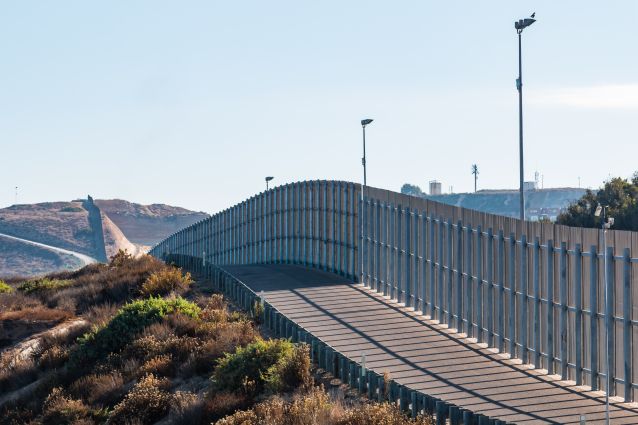BEING DIFFERENT HAS never been easy, and that’s especially true in the context of COVID-19. Public health control measures have exacerbated health and social inequities for marginalized communities, including those marginalized based on sexual orientation, biological sex, and gender identity or expression. Although sexuality and gender are protected from discrimination by our national human rights and criminal legislation, individuals with marginalized sexualities and genders consistently experience less secure employment, lower incomes, and less financial security. They are also more likely to experience homelessness and insecure housing. Did I mention that this was all before COVID-19?
In 2017, Prime Minister Justin Trudeau made a public apology to lesbian, gay, bisexual, transgender, queer, and Two-Spirit (LGBTQ2) communities. In it, he provided a brief history on our country’s systematic oppression of these individuals. He also acknowledged that discrimination on the basis of sexuality and gender is ongoing. In 2019, the Standing Committee on Health released a ground-breaking report on the health of LGBTQIA2 communities in Canada. This report highlighted the diverse range of inequities experienced by this heterogeneous population. It highlighted how stigma and discrimination have led to poorer mental and chronic health, which we now know are key vulnerabilities to COVID-19 and associated control measures. The report also highlighted the need for community involvement in decision-making, and for better data collection. To date, we have very little governmental data about these populations in Canada; for example, data on sexual orientation is not collected in the census. It’s only this year that Canada’s census will include a question on gender identity, for the very first time.
Without data and testimony, the experiences of 2SLGBTQQIA+ people related to the pandemic are invisible to both the state and society more broadly.
While the government has amassed much data on COVID-19, it has willfully ignored 2SLGBTQQIA+ people in their data collection. This, despite calls to action from these very communities. How does this reflect who we value and care about as a society? Without data and testimony, the experiences of 2SLGBTQQIA+ people related to the pandemic are invisible to both the state and society more broadly.
The sparse research that does exist on COVID-19 among 2SLGBTQQIA+ people has been led by community agencies and universities, because governments simply are not doing it. The limited data we do have tells a stark tale of inequity: during the first wave of COVID-19, Egale Canada estimated that half of 2SLGBTQQIA+ households faced lay-offs or reduced employment—compared with 39% of all households. 2SLGBTQQIA+ people were more likely to report significant impacts on their mental health (42% versus 30%), but were also more likely to self-isolate (58% versus 49%). A second report later in 2020 found that Black, Indigenous and other racialized 2SLGBTQQIA+ were more likely to have been admitted to hospital for COVID-19 and to know someone who died from COVID-19.
Research out of Trent University highlighted that inequities for 2SLGBTQQIA+ people are being further exacerbated in this pandemic. 2SLGBTQQIA+ people reported feeling disconnected from their communities. Indeed, Pride festivals were cancelled across the country in 2020, and access to community-based organizations has been negatively impacted. 2SLG-BTQQIA+ individuals also have less access to health care, including gender affirming services and sexual health care.
“Isolation at home” has been a shared COVID-19 experience for many. Yet, “home” for 2SLGBTQ-QIA+ people is often fraught with homophobia, transphobia, biphobia, and more. 2SLGBTQQIA+ youth were already overrepresented in unstably housed communities prior to COVID-19. Some 2SLGBTQQIA+ youth had to choose between isolating in unsupportive or hostile households, or leaving the place they called home for less secure housing. Even before COVID-19, 2SLGBTQQIA+ seniors in housing facilities reported needing to conceal or manage their identity due to discrimination from other residents and staff; and in the era of essential visitors only, this concealment became more difficult. No one should be forced back into ‘the closet’ for their safety. As we re-envision our approach to housing and long-term care post-COVID-19, we need to consider the ways in which we create affordable, affirming spaces for 2SLGBTQQIA+ people. One unique opportunity to consider is intergenerational housing solutions that facilitate community building, knowledge sharing, and mutual support.
There is no single COVID-19 narrative for our diverse 2SLGBTQ-QIA+ community. This pandemic has highlighted the fissures in health and social systems, including the barriers that the distinct invisibility of 2SLGBTQQIA+ people in official data creates. Persistent health and social inequities require structural solutions. We must take this opportunity to build a more just society. Let’s avoid the need for any
future apologies.
What’s in an acronym? Broadening inclusion.
As an astute reader, you may have noticed the evolving acronym throughout this piece. I use 2SLGBTQQIA+ to include Two-Spirit, lesbian, gay, bisexual, transgender, queer, questioning, intersex, asexual, and other sexual orientation and gender identity minorities. This acronym was used in the recent report on the national inquiry into missing and murdered Indigenous women and girls, and includes a few key differences from what has been used previously. Two-Spirit is put at the start of the acronym to recognize that Indigenous people were here before European colonization. The second Q for questioning is for those who are still exploring their connection to the assumptive labels of heterosexual and cisgender that mainstream society reinforces. And finally, the plus symbolizes inclusion of others not listed, to recognize the limitations of any acronym.







